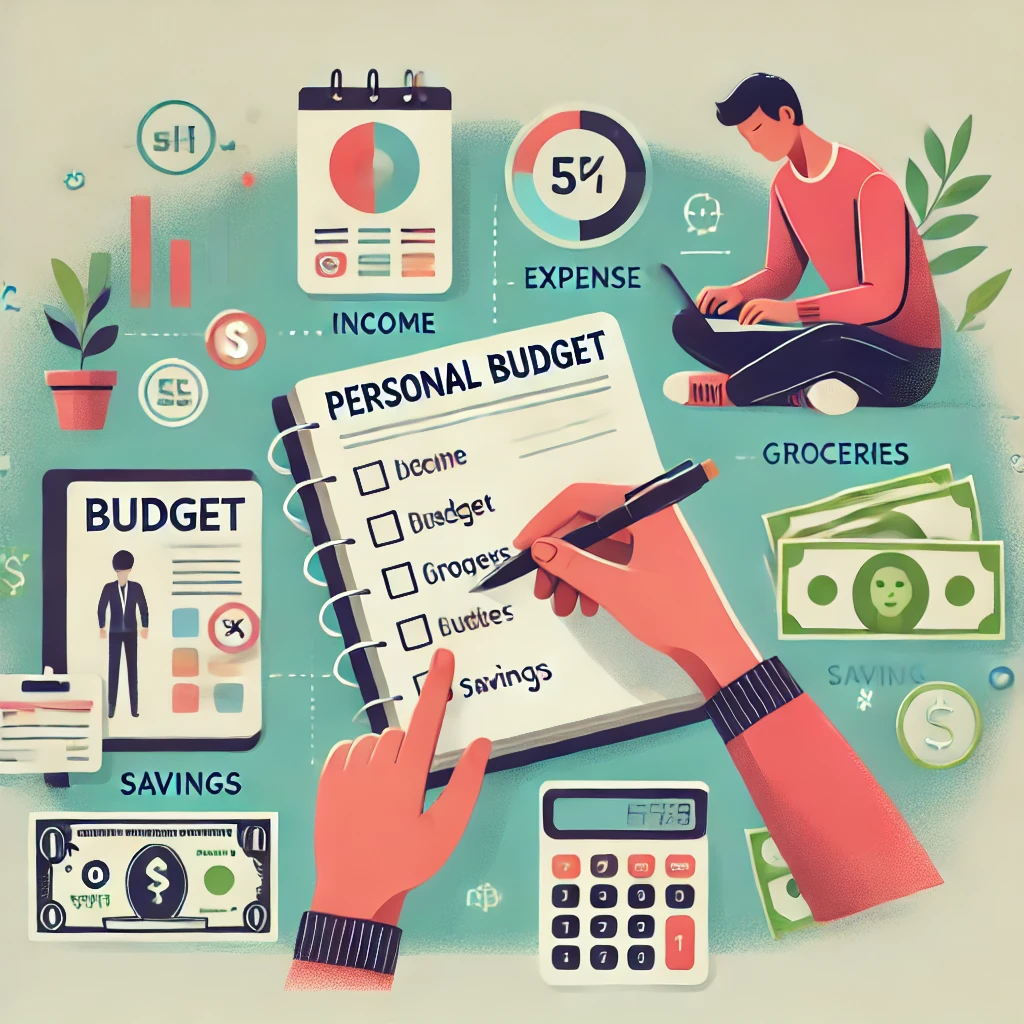Introduction
Creating a personal budget is one of the most effective ways to manage your finances, achieve your financial goals, and reduce stress about money. A well-planned budget helps you track your income and expenses, ensuring you live within your means and save for the future. This guide will walk you through the steps to create a personal budget and provide tips on how to stick to it.
1. Determine Your Income
The first step in creating a budget is to know how much money you have coming in. Calculate your total monthly income, including your salary, freelance work, and any other sources of income. If your income varies from month to month, use an average to get a more accurate picture.
2. Track Your Expenses
Next, track your expenses to understand where your money is going. Divide your expenses into two categories: fixed and variable.
- Fixed Expenses: These are regular monthly expenses that don’t change much, such as rent, mortgage payments, insurance, and utilities.
- Variable Expenses: These expenses can fluctuate each month, such as groceries, dining out, entertainment, and transportation.
3. Set Financial Goals
Identify your short-term and long-term financial goals. Short-term goals might include saving for a vacation or paying off a credit card, while long-term goals could be buying a house or saving for retirement. Having clear goals will motivate you to stick to your budget.
4. Create Your Budget
Now that you have a clear picture of your income and expenses, it’s time to create your budget. Allocate your income to cover your expenses and savings goals. Here’s a simple approach to budgeting:
- 50/30/20 Rule: Allocate 50% of your income to needs (rent, utilities, groceries), 30% to wants (dining out, entertainment), and 20% to savings and debt repayment.
5. Monitor and Adjust Your Budget
Regularly review your budget to see if you’re staying on track. Monitor your spending and compare it to your budgeted amounts. If you find that you’re overspending in certain areas, adjust your budget accordingly. It’s important to be flexible and make changes as needed.
6. Use Budgeting Tools
There are many tools available to help you manage your budget. Consider using budgeting apps, spreadsheets, or financial software to track your income and expenses. These tools can make it easier to stay organized and monitor your progress.
7. Save for Emergencies
An essential part of any budget is an emergency fund. Aim to save at least three to six months’ worth of living expenses. This fund will help you cover unexpected expenses, such as medical bills or car repairs, without derailing your budget.
8. Cut Unnecessary Expenses
Look for areas where you can cut back on spending. Cancel subscriptions you don’t use, cook more meals at home, and find cheaper alternatives for entertainment. These small changes can add up and help you save more money.
9. Stay Motivated
Sticking to a budget can be challenging, but staying motivated is key. Celebrate your financial milestones, no matter how small. Keep reminding yourself of your financial goals and the benefits of budgeting.
10. Seek Professional Advice
If you’re struggling to create or stick to a budget, consider seeking advice from a financial advisor. They can provide personalized guidance and help you develop a plan that works for your specific situation.
Conclusion
Creating and sticking to a personal budget is a powerful tool for achieving financial stability and reaching your financial goals. By understanding your income and expenses, setting clear goals, and making adjustments as needed, you can take control of your finances and reduce financial stress.
Start your budgeting journey today and pave the way for a more secure financial future.


